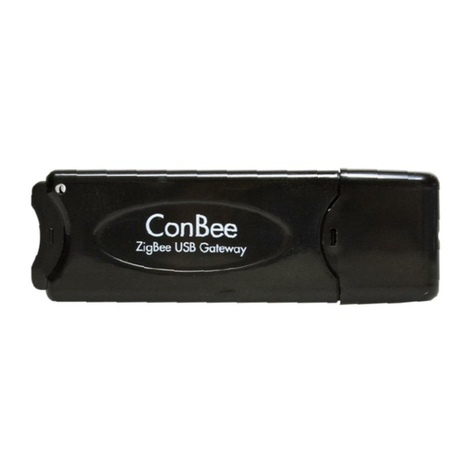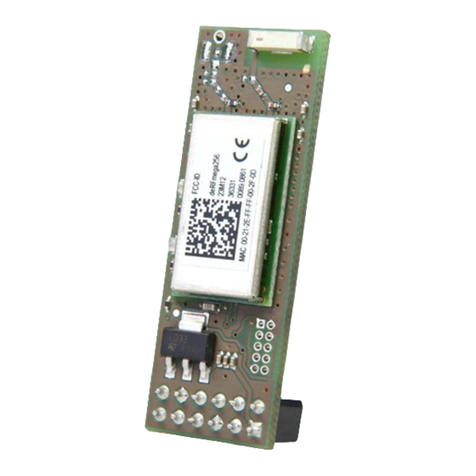
Wireless Light Control StarterKit
Quick Start Guide
dresden elektronik ingenieurtechnik gmbh 02-2014 page 4 of 5
Update FLS Firmware
The FLS has the ability to receive software updates
for service or additional supply of new functions. The
automatic search and installation of updates requires
that the respective setting is activated (in ‘Settings |
System’the checkmark at ‘Allow gateway discovery
and checking for updates via internet’is set) and the
gateway is connected to the Internet.
Just as a new firmware version has been
downloaded, it can be spread automatically by
gateway per over-the-air-update (OTAU). Thereto it is
required that the checkmark at ‘OTAU server’is set in
the menu item ‘Settings | Network’.
During the update procedure the green LED of the Shield blinks very quickly. Controlling the system is
still possible, but it can perhaps be delayed.
After successful transmission of the firmware an automatic reboot of the FLS takes place. During this
time the illuminant which is connected to the FLS is switched off. After approx. one minute the lights
are operable again with the parameters set prior to the update. Settings such as colors, brightness,
scenes etc. remain untouched from the update.
Reset FLS to Factory Settings
Resetting the FLS is not necessary during normal operation. Only if lights shall join a new network a
reset is required before; two options are possible.
If light and gateway can be moved within a range of
less than 50 cm, a ‘touchlink reset‘ can be
performed. Go to the ‘Settings | Touchlink’ menu
and click the ‘scan for devices’button once. A
progress bar indicates the process. After the scan
procedure has been completed, a list of available
devices within range gets displayed. Each light
should be identified by clicking the ‘blink’button first
before resetting it. Observe the status of each
operation at the bottom of the page. If the target light
is not listed, try scanning again.
In the second case gateway and lights are installed fixed, the distance between them might be greater
than 50 cm. In this case ‘touchlink’reset won’t work. Proceed with a power cycle sequence instead as
follows:
1. Power cycle 4x with 2 to 20 seconds on time.
2. When switching on for the fourth time: illuminant blinks for 10 seconds.
3. Wait until light stops blinking.
4. Switch on and off again 2x, after approx. two seconds the device begins to restore the factory
settings (duration approx. 60 seconds, in this time the light is off). Afterwards the light is operative
again and can be added to a network.
























